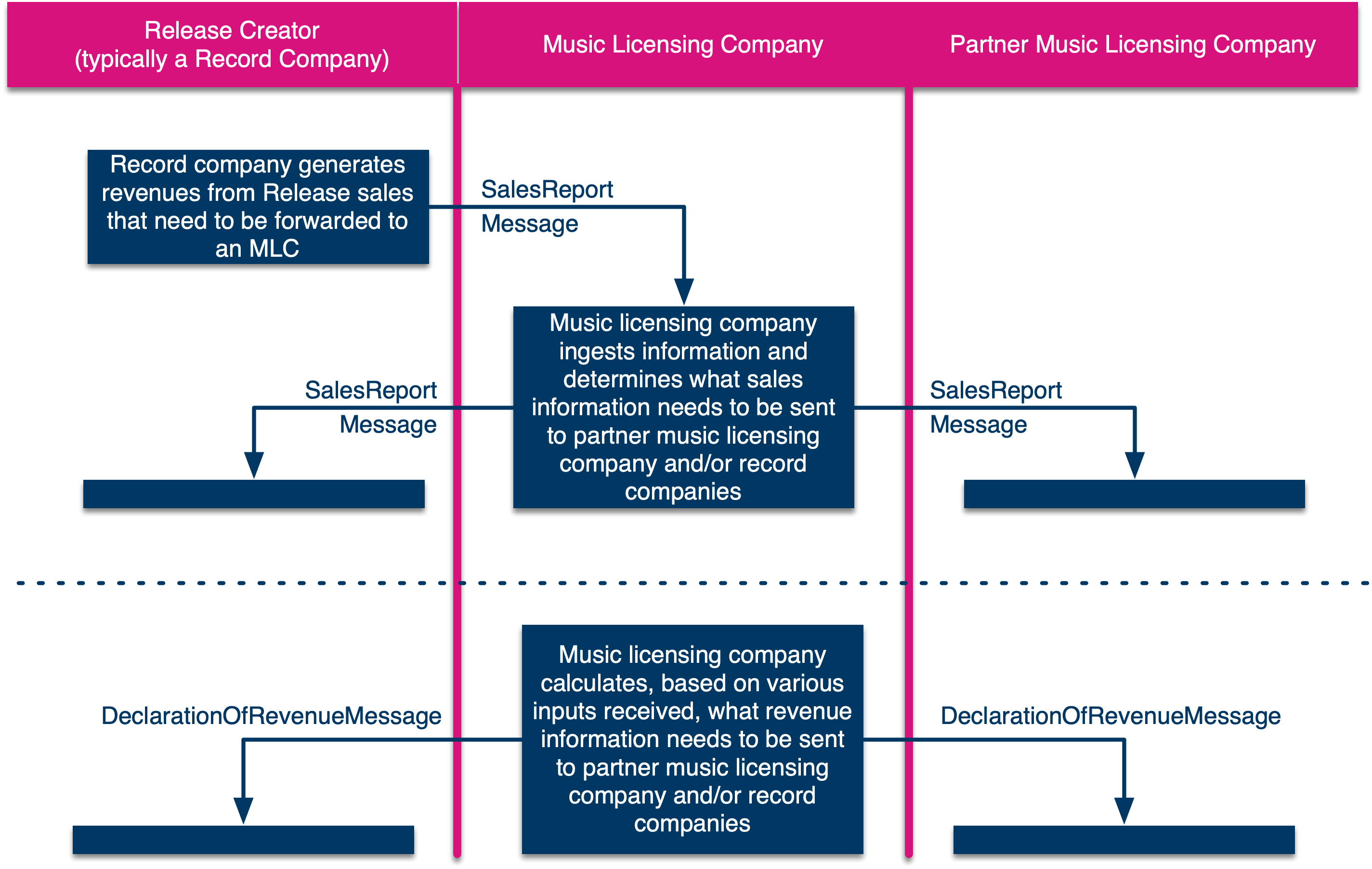5 Choreography
The choreography by which a company can provide an individual message defined in the Recording Data and Rights Notification Standard to a business partner is defined by the supporting Recording Data and Rights Choreography Dtandard (RDR-C).
The figure below shows the choreography of processes that the Recording Data and Rights Notification Standard enables. The figure does not show the use of manifests or acknowledgements, which is described in RDR-C.
Figure 1 - Choreography of the Recording Data and Rights Notification Standard (Declaration of Sound Recordings)
Figure 2 - Choreography of the Recording Data and Rights Notification Standard (Declaration of Performer, Contributor and/or other Rights Holder Mandates)
Figure 3 - Choreography of the Recording Data and Rights Notification Standard (Reporting)
The Table below summarises the point when each message is sent. The table also indicates who sends which message to whom and which of the messages are defined in this standard.
Message Name | Sender and Receiver information | |
|---|---|---|
1 |
| A record company, Music Licensing Company and/or an agent of such sends information about Resources and rights claims to a second Music Licensing Company in each mandated territory. This message can be sent proactively or in response to a |
2 |
| A Music Licensing Company has received a The RightsClaimStatusUpdateMessage may also be sent based on external triggers (e.g. when another Rights Controller's claims lead to overclaims). |
3 |
| Update with the intention that the receiving Music Licensing Company deletes, or marks inactive, the listed rights previously claimed by a record company. This message may not be used when a company has lost previously held rights. Such cases need to be communicated with the |
4 |
| A Music Licensing Company has received sales information about a Resource but has not received any information, including rights claims, with respect to that Resource. Such information can be requested. |
5 |
| A Music Licensing Company has been assigned a collection mandate (by a Performer, Contributor or any other Rights Controller), and the Music Licensing Company or any other Rights Controller such as a record company or an agent of such forwards this information to a second Music Licensing Company. |
6 |
| A Music Licensing Company has received an The |
7 |
| Update with the intention that the receiving Music Licensing Company deletes, or marks inactive, the listed collection mandates with respect to Performers, Contributors or Rights Controllers previously listed by a record company. As with the |
8 |
| After sales of sound carriers or Resources for the mandated territories have been received and processed by a Music Licensing Company, some sales information needs to be shared with sister Music Licensing Companies in the mandated territories, for those Music Licensing Companies that allocate revenues on the basis of unit sales. |
9 |
| After invoicing the user, payment by the user to the Music Licensing Company, and the allocation by the Music Licensing Company of the related revenues to Resources, the Music Licensing Company declares to another Music Licensing Company its share in the revenues. |
Table 1 – Messages in the Recording Data and Rights Notification Standard


